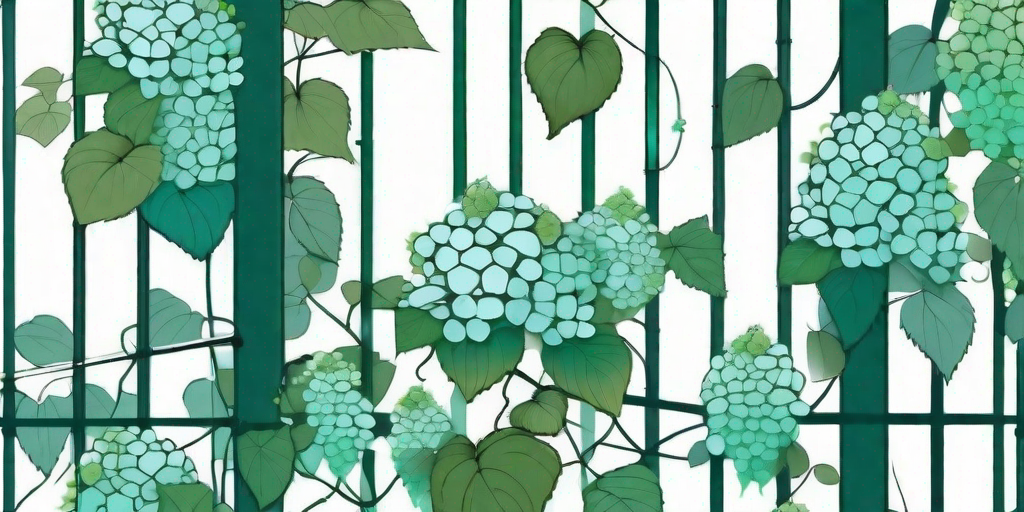
If you've ever dreamed of transforming your garden into a lush, vertical wonderland, then climbing hydrangeas might just be your ticket to paradise. These tenacious climbers are the botanical equivalent of a superhero, scaling walls and fences with ease, all while boasting a stunning display of flowers. But like any superhero, they require a certain level of care and attention. So, buckle up, green thumbs, because we're about to embark on a horticultural adventure.
The Lowdown on Climbing Hydrangeas
Before we delve into the nitty-gritty of hydrangea care, let's get acquainted with our leafy protagonist. Climbing hydrangeas, or Hydrangea petiolaris if you want to get technical, are native to the woodlands of Asia. They are deciduous vines that can reach heights of up to 50 feet. That's taller than a brachiosaurus, for those of you keeping score at home.
These plants are beloved for their large, heart-shaped leaves and clusters of white flowers that bloom in late spring and early summer. But their beauty is more than skin-deep. Climbing hydrangeas are also known for their hardiness, able to withstand harsh winters and thrive in a variety of soil conditions. They're like the Bear Grylls of the plant world.
The Superpower of Self-Adhesion
One of the most impressive traits of climbing hydrangeas is their ability to adhere to surfaces without any support. They achieve this through aerial rootlets, which are like tiny suction cups that allow the plant to grip onto walls, fences, and even other trees. It's like they've got their own built-in Spiderman web-shooters.
However, their self-adhesion does have a downside. Once attached, climbing hydrangeas can be difficult to remove without causing damage to the surface. So, before you let them loose on your house wall, make sure you're ready for a long-term relationship.
How to Grow Climbing Hydrangeas
Now that we've covered the basics, let's move on to the meat and potatoes of this guide: how to grow and care for climbing hydrangeas. Don't worry, it's not rocket science, but a bit of patience and tender loving care will go a long way.
Planting Your Hydrangeas
When it comes to planting your hydrangeas, location is key. These plants prefer a spot with partial shade and well-drained soil. They're not fans of waterlogged roots, so if your garden is more swamp than soil, you might want to reconsider.
Once you've found the perfect spot, dig a hole that's twice as wide and just as deep as the root ball. Place the plant in the hole, making sure the top of the root ball is level with the soil surface. Backfill the hole, firm the soil around the plant, and water thoroughly. Congratulations, you've just planted a hydrangea! Now, the waiting game begins.
Caring for Your Hydrangeas
Climbing hydrangeas are relatively low-maintenance, but they do appreciate a bit of pampering. Regular watering is essential, especially during dry spells. However, be careful not to overwater, as this can lead to root rot. It's a fine line between hydration and waterboarding.
As for feeding, a slow-release, balanced fertilizer applied in early spring should do the trick. Pruning is not usually necessary, but if your hydrangea starts to resemble a jungle, feel free to trim it back in late winter or early spring.
Common Problems and Solutions
Even with the best care, climbing hydrangeas can sometimes run into problems. But don't panic, most issues can be easily resolved with a bit of know-how.
Leaf Spot
Leaf spot is a common issue, characterized by purple or brown spots on the leaves. This is usually caused by a fungus and can be treated with a fungicide. If your hydrangea starts looking like it's got the measles, it's time to bring out the big guns.
Prevention is better than cure, so try to avoid overhead watering and ensure good air circulation around your plants. Remember, fungi love damp, stagnant conditions, so don't let your hydrangeas become a fungal paradise.
Hydrangea Scale
Hydrangea scale is a type of sap-sucking insect that can cause yellowing and wilting of the leaves. If you notice a sticky substance on your hydrangeas or a black sooty mold, you might have a scale problem. Insecticidal soap or oil can help control these pests, but severe infestations may require a systemic insecticide.
Again, prevention is key. Regularly inspect your plants for signs of pests and act quickly at the first sign of trouble. It's like a game of Whac-A-Mole, but with bugs instead of moles.
FAQs
- How fast do climbing hydrangeas grow?
- These plants are not exactly speed demons. In fact, they're known for their slow growth rate, especially in the first few years. But once established, they can grow up to a foot per year. Patience is a virtue, my friends.
- Can climbing hydrangeas grow in full sun?
- While they can tolerate full sun, climbing hydrangeas prefer a spot with partial shade. Too much sun can lead to scorched leaves, so unless you want your hydrangeas to look like they've had a bad sunburn, it's best to provide some shade.
- Can I grow climbing hydrangeas in a pot?
- Yes, you can! However, keep in mind that these plants can get quite large, so you'll need a big pot. And remember, potted plants require more frequent watering than their ground-planted counterparts.
And there you have it, folks! The secret to growing and caring for climbing hydrangeas. With a bit of patience and the right care, you too can transform your garden into a vertical paradise. So, what are you waiting for? Get out there and start planting!















